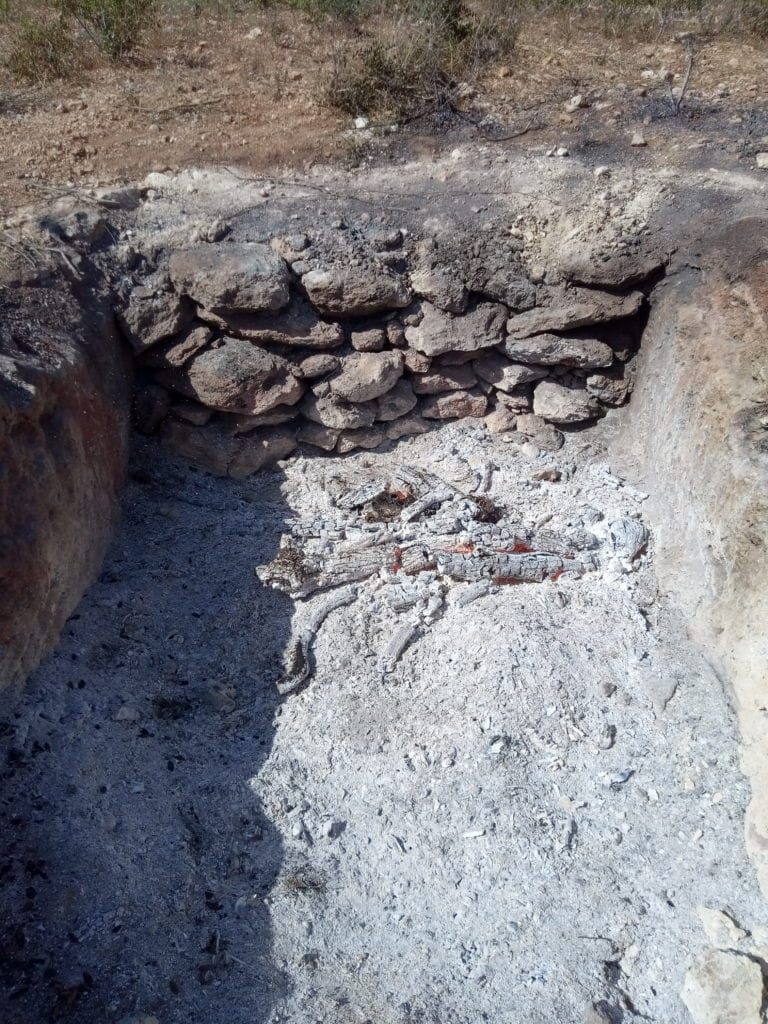A major step was made towards reinstating the Temple service: after an intensive study into the practical details, an actual heifer, albeit not a red one, was burned in precisely the manner that will enable the Jewish people to be purified.
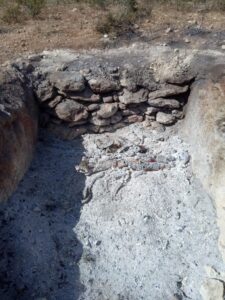
The Most Enigmatic Commandment
Chapter 19 of the Book of Numbers gives an in-depth description of the mitzvah (Torah commandment) of the burning of the red heifer and subsequent mixing with water for the purpose of sprinkling on the Jews as a means of ritual purification from contact with a dead body. Despite the Biblical description, the mitzvah of the red heifer is considered the most enigmatic of all the Biblical commandments. The red heifer is essential to the restoration of the Temple service.
The return of the mitzvah of the red heifer is described by the Prophet Ezekiel as a stage in the final redemption.
I will sprinkle clean water upon you, and you shall be clean: I will cleanse you from all your uncleanness and from all your fetishes. Ezekiel 36:25
The red heifer is not a sacrifice per se so it is burned in an area outside of the Temple, on the Mount of Olives. According to Jewish tradition, there have been nine red heifers since the mitzvah was given at Mount Sinai and the tenth red heifer will be used in the era of the Messiah. The last red heifer was prepared by the high priest Ishmael Ben Piavi around 60 CE and its ashes sufficed for the next three hundred years.
Science Meets the Bible
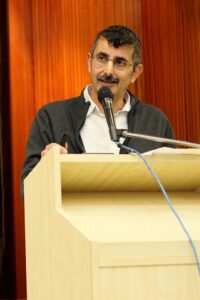
Last Wednesday, Professor Zohar Amar, a Professor in the Department of Land of Israel Studies at Bar-Ilan University, reported at a Temple Institute Conference on his studies into the practical details of reinstating the mitzvah (Torah commandment) of the red heifer. Professor Amar has been involved in various areas of research that link Torah and science. His approach is to harness contemporary research techniques to scholarship in Jewish Studies.
“The burning of the red heifer is a biblical commandment which was performed until the end of the Second Temple period,” Professor Amar told the conference. “This is a rare ceremony that took place once in several generations, and the ashes were used to prepare sanctified water that granted ritual purification. Historical sources indicate that the practice of purification using the ashes of the red heifer continued until the beginning of the fourth century CE.”
“The details of burning the heifer and the method of preparing the ashes appear extensively in sources from the Mishnaic periods; heretofore, the subject has only been studied theoretically,” Prof Amar said, explaining that he conducted his research in cooperation with the Temple Institute. “A simulated experiment of burning a red heifer was conducted to investigate several research questions, such as: How much wood was required to burn a red heifer completely to ashes and how much ash actually remained after the burning?. How is it possible that ashes from immolating one heifer, as it appears in the sources, can supply ritual purposes for many years?”
“One of the models that were used to build the experimental program was the rite of cremation which is conducted to this day in India and Nepal,” Prof. Amar explained. “The design of the entire experiment took many months, and the implementation itself was carried out far from the eye of the public and the media. Only after analyzing the results did it become possible to publish it. In the course of the experiment, all of the specifications mentioned in the sources were reconstructed, beginning with the excavation of a ‘winepress; a rectangular pit, in which the pyre was built of dried wood of the pine, oak, and fig trees.”
“For the purpose of the experiment, a mature sick heifer was selected of the Baladi breed which was prevalent in ancient Israel,” Prof. Amar said, emphasizing that the heifer used in the experiment was not red. “The process of burning lasted some nine hours, and the heifer’s ashes together with the wood used to burn it yielded several tens of kilograms of ashes. It emerges that the amount of ash needed to prepare the ritual water was a minute amount sprinkled over the water. Based on the amount of ash obtained, the investigator proposed a theoretical model to calculate how many instances of sprinkling the water this amount could actually yield. This is a groundbreaking study of historical significance because there has been no investigation into the practical implementation of the laws of the red heifer since the destruction of the Temple.”
The experiment was designed to check the amount of ash produced, and whether it would be enough to purify every Israelite living today.
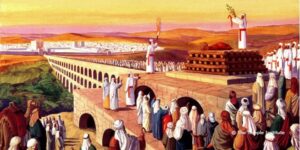
Empirical Knowledge: Weights and Measures
According to Prof. Amar’s research, the average amount of ash produced from Jerusalem pine is approximately 5.2 percent of the weight of the wood, 6.7 percent for almond trees, 8.5 percent for sycamore, 8.4 percent for cypress, and 5.4 percent for walnut. Prof. Amar confirmed the Mishna (oral law) which stated that the wood with the best qualities for burning the red heifer came from the fig trees which were common in the Temple era.
“The wood is fibrous and ignites easily,” Professor Amar explained. “It then burns the other wood in the pyre. The ashe produced is quite fine and requires little sifting after burning.”
Prof. Amar emphasized the importance of the wood.
“A continuous and intense fire is required since the red heifer must be completely consumed, bones and all,” he said. “In this respect, it is similar to the cremation customs in Nepal and India which have been conducted for thousands of years, even until today.”
His research concluded that in order to burn a heifer weighing one hundred kilograms (220 pounds), one-half ton of wood is required. The incineration is carried out in an open space and the fire reaches temperatures of 800-1000 degrees Celsius. At the end of the process, very little organic material remains and even the bones turn to powder. In the end, about 2-4 kilograms of ash remains from the body of the heifer, or about 5.3 percent of the original body.
According to Professor Amar, a half-ton heifer would require 5.2 tons of wood, or five kilograms wood for every kilogram of flesh.
Building the Pyre: Burning a Heifer
There are still several elements that must be verified before the actual ritual can be performed. The Temple Institute is still investigating the precise location where the red heifer is burned. For the purposes of the experiment, a trough was carved into the bedrock, 4.2 meters in length, two meters wide, and 90 centimeters deep. The pyre was constructed in the manner described in the oral torah as a “tower with windows”.
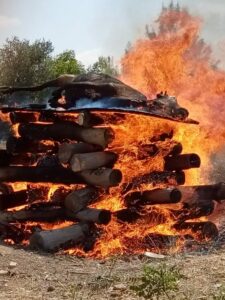
For the trial burning, Prof. Amar used logs with a diameter of approximately 20 centimeters. The manner in which the logs were stacked allowed for the flames to entirely encompass the logs while also allowing for air to enter. The upper logs were approximately 1.9 meters long. The actual tower was built using pine, as per the oral Torah. The interior was filled with three layers: on the bottom were twigs and pine needles to facilitate the initial ignition. On them were place dried relatively thick fig trunks. Upon them were placed trunks of oak trees that burn intensely for an extended period of time.
A cow weighing 270 kilograms was used for the experiment and was ritually slaughtered adjacent to the prepared pyre. The blood required for the ritual was collected in the hand of a Kohen. The cow was lifted onto the pyre by 12 men using a jury-rigged litter.
The experiment was carried according to the strictest details of the ritual with the head of the cow towards the south and her legs facing west. When the experiment began, the fire spread quickly and within one hour, the belly of the cow collapsed. At this point, Cedarwood, hyssop, and scarlet-dyed wool were added to the pyre, as per the Biblical instructions.
After two hours, the fire reached a temperature of 940 degrees. The fire burned for nine hours but several days passed before the ashes had cooled sufficiently to allow them to be collected.
In addition to the heifer, 1.4 tons of wood were used in the experiment. This produced a total of 66 kilograms of ash, or about four percent of the original matter. Prof. Amar estimated that the ashes from the actual animal represented 11 kilograms of the total ash.
Billions of Jews Can Be Purified
The next stage of the experiment was to determine how many people could be purified by this quantity of ash. For the purification ritual, a tiny pinch of ash is sprinkled over barrels of spring water. Pro. Amar determined that in order to facilitate this process, tools should be used to grind the ash into a fine powder.
For a barrel containing 250 liters of water with an opening of 60 centimeters, Prof Amar determined that .2-.3 grams of ash would suffice. This works out to about one gram of ash per thousand liters of water.
Ritual purification requires only one drop to be sprinkled on each person or object. For the purposes of the experiment, Prof. Amar used bunches of three branches of common hyssop dipped into one centimeter of water. He then sprinkled the water into a container ten times. Using this method, he determined that one sprinkling required one-tenth of one millimeter of water.
On this basis, Professor Amar determined that 66 kilograms (145.5 lbs) of ash would be sufficient for at least 660 billion sprinklings.
He also noted that it is permitted to add wood. Each addition of one ton of wood would permit an additional 250 billion sprinklings.
“Even if we assume that some that a portion of the water will be wasted or not fully utilized, or if a portion of the ash is lost, in any case, the ashes from one red heifer will be sufficient for purifying a huge number of people,” Prof. Amar concluded. “This clarifies how the ashes from one cow were sufficient to purify several generations of Israel even after the Temple itself was desecrated.”
“For the people who strived with all their might in this project, it is not unreasonable that within a few years, this forgotten process of purification will be completely renewed,” Prof. Amar concluded.
One Step Closer But Still in God’s Hands
Rabbi Azariah Ariel has been charged with overseeing the search for a red heifer by the Temple Institute.

“In order for us to perform this mitzvah, we need a kosher red heifer to be born,” Rabbi Ariel told Breaking Israel News. “This is in the hands of God. We know that this is rare but we don’t even have the statistics to guess at how rare this actually is in nature. Even the ranchers we interviewed have no idea how rare this is.”
“I could receive a phone call later today that a red heifer was born or it may be several years,” Rabbi Ariel said. “We simply do not know and it is entirely in God’s hands.”
“We still do not have a certifiable red heifer,” Rabbi Ariel said. “We are currently checking out two calves of the Angus breed that are five months old. For them to be considered heifers, as the Bible describes, they must be two years and one day old. There can be no blemish, no holes in the ear. If two hairs are not red, the heifer is unfit. There are Halachic issues with them right now since a few hairs may not be the correct shade of red, though this may be rectified as they get older.”
“This project certainly taught us a great deal,” Rabbi Ariel said. “This was the result of years of research into the written material. There will surely be more trial runs before we are ready for the ritual. But this certainly brought us closer to actualizing the return of the mitzvah.”
“But from our side, the requirement to perform the ritual was established at Mount Sinai,” Rabbi Ariel said. “Mitzvoth are not optional and we do not wait for them to float down from heaven. As Jews, we must do what we can to perform what God commanded.”
The Temple Institute in Jerusalem has been working for three decades to educate the public and make practical steps to prepare for the Third Temple. Pro. Amar’s work can be viewed at his website.


